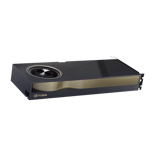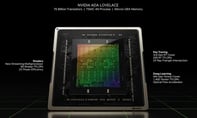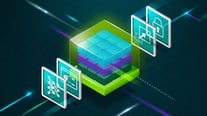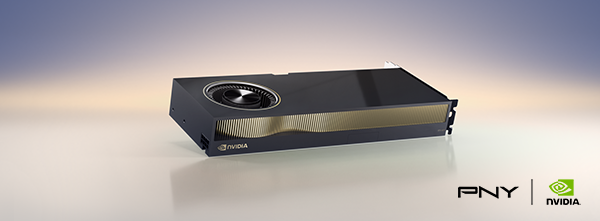In collaboration with Engineering.com, we present a series of articles that showcase advancements in the engineering field. These articles cover the role of data centers, graphics in digital transformation, Ada Lovelace GPUs, and Virtual GPUs. Read below as we dive into these transformative technologies.
The Ultimate Accelerator for the Data Center
Graphics cards have become an increasingly important component of engineering workstations. They’ve evolved from specialized chips for visualization to versatile processors for everything from data science to artificial intelligence (plus they still render a mean image).
And naturally, graphics cards and the GPUs that power them are not limited to desktop or mobile workstations. They’re also taking over the data center. Engineering organizations are making use of data center GPUs to empower their employees with best-in-class hardware for photorealistic ray tracing, machine learning training and inferencing, engineering simulation and more.
The Role of Graphics in Digital Transformation
Digital transformation is the process of using digital technologies to fundamentally change how organizations operate and deliver value to customers. This process involves integrating digital technology into all areas of a business, resulting in significant changes to how the organization operates and how it delivers value to customers. The goal of digital transformation is to improve efficiency, increase innovation, and drive growth by leveraging the power of digital technology.
operate and deliver value to customers. This process involves integrating digital technology into all areas of a business, resulting in significant changes to how the organization operates and how it delivers value to customers. The goal of digital transformation is to improve efficiency, increase innovation, and drive growth by leveraging the power of digital technology.
Meet Ada Lovelace, NVIDIA’s Beautiful New GPU
When NVIDIA announced its newest graphics card architecture last month—Ada Lovelace, named after the pioneering computer scientist—it didn’t temper expectations. Describing the new architecture as “a thing of beauty,” NVIDIA promised bold improvements for its upcoming Ada-based graphics cards, claiming they would provide up to four times the performance of the previous-generation Ampere-based cards.
promised bold improvements for its upcoming Ada-based graphics cards, claiming they would provide up to four times the performance of the previous-generation Ampere-based cards.
How does Ada enable such a big performance bump? In a white paper outlining the new architecture, NVIDIA explained how improved power efficiency, faster ray tracing, and a new feature called the Shader Execution Reordering (SER) are among the enhancements that make Ada so beautiful.
Future-Proofing IT Infrastructure With Virtual GPUs
Industries such as manufacturing, architecture, engineering, construction and operations, along with media and entertainment face compressed design cycles and pressure to reduce costs to maintain competitiveness.  Organizations typically have multiple field offices with geographically dispersed development teams. In addition, internal departments frequently collaborate with external vendors on all aspects of projects.
Organizations typically have multiple field offices with geographically dispersed development teams. In addition, internal departments frequently collaborate with external vendors on all aspects of projects.
The size of 3D models required for work, network bandwidth, and workstation performance means loading times are excessive. This often results in lost productivity. Hardware required to run high-end applications makes mobility complex and difficult, and this is exacerbated by the requirements of remote work and spatially disbursed teams.
To read more articles on how NVIDIA professional GPUs are making a difference in the world, check out our PNY Pro in the News section.



